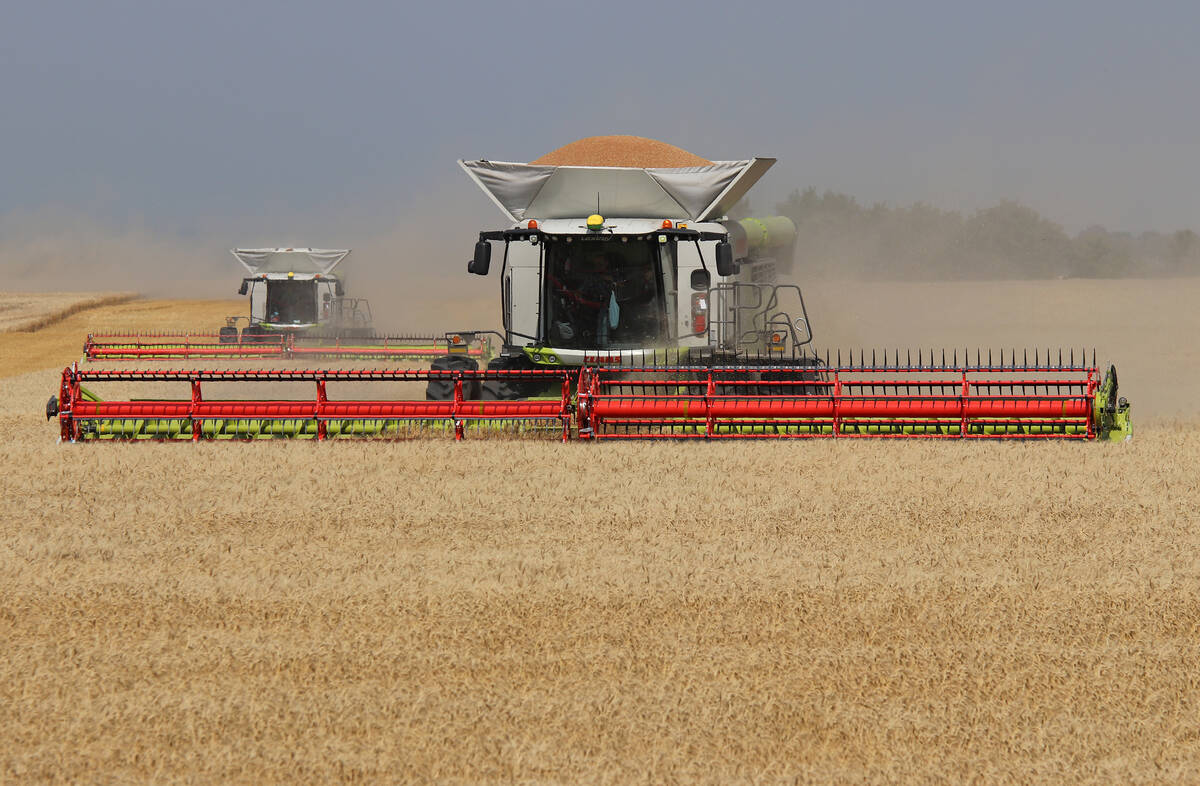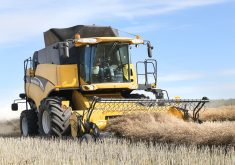We all know that China’s food demand and production is a major factor in global agricultural trade.
And the first representative image of Chinese imported food demand that comes to mind might be a crowded marketplace with lots of shoppers.
However, what is likely a more accurate picture is a hog production facility because so many of the foods China imports are actually destined for livestock feed.
And it will likely blow your mind to see what the latest Chinese “hog barn” looks like.
Read Also

China’s grain imports have slumped big-time
China purchased just over 20 million tonnes of wheat, corn, barley and sorghum last year, that is well below the 60 million tonnes purchased in 2021-22.
How about a concrete, 26-storey, automated high-tech twin tower that is under construction that will produce 1.2 million pigs a year?
The monster project, being built in the small town of Ezhou, Hubei, by itself will produce a little more than half the number of pigs that all of Saskatchewan’s 147 hog barns do each year.
The New York Times on Feb.8 published a feature story on the project being built by Hubei Zhongxin Kaiwei Modern Husbandry. The Guardian newspaper did a story in November.
One tower, equipped with a space age control system monitoring a host of data points from temperature to humidity, toxic gas, feed and manure, is already complete and populated with breeding stock. Construction of the second tower is well advanced.
These are the world’s largest freestanding hog barns, but slightly smaller multi-storey hog production facilities are popping up around China, with strong government financial support.
About a decade ago, Beijing started encouraging a move from traditional back yard hog production to modern barns to reduce problems with manure and air and water pollution.
The effort increased after African swine fever (ASF) swept through the country’s swine population with devastating results.
Now big corporations, many of them publicly traded on China’s exchanges, are getting into the business.
The towers in Ezhou are being built by a company founded on cement production.
They are on the same site as a cement plant, and waste heat from the industrial operation is used to heat water for the hogs.
Hog manure will go into an anaerobic digester and the methane produced will generate electricity.
The company also plans a slaughter plant on site.
The size and complexity boggles my mind.
I wonder about the animal welfare, disease implications and financial sustainability of applying such an industrial scale to animal production.
But that is what is happening in China, where the population eats more pork per person than anywhere else and its hog herd is by far the largest in the world. It has in the neighbourhood of 450 million hogs, a little more than half the world’s swine population.
For context, Canada has about 14 million hogs and the United States 74.4 million.
And as we know, although it retains a strong desire for food self-sufficiency, China can’t grow all the feed that those hogs eat.
It imports close to 100 million tonnes of soybeans, or about 57 percent of all soybeans traded around the world.
In recent years, it has become the world’s number one or two corn importer and also brings in huge amounts of canola, peas and other feed ingredients.
Its strategy is still to meet its meat consumption needs with domestic product, but the ASF disaster that began in 2019, which forced herd culling and a drop in domestic pork production, caused it to temporarily increase imports. Pork imports soared to 5.28 million tonnes in 2020 from about 1.5 million two years before.
Canada’s hog producers were among those who benefitted.
Canadian exports of fresh, chilled and frozen pork to China jumped to about $1.5 billion in 2020, up from $494 million the year before, according to Statistics Canada. It was the first and only time China beat out Japan or the United States as the leading pork importer.
But China was able to recuperate from ASF more quickly than expected even as it battled another disease, this time affecting humans — COVID.
China’s pork production recovered to 55 million tonnes in 2022 after falling as low as 36.34 million in 2020, according to U.S. Department of Agriculture data.
With domestic production revived, its pork imports last year fell back to 2.05 million tonnes, with expectations for 2.1 million this year.
Canadian pork exports to the country in 2022 fell to $378 million.
I’d be surprised if this pig skyscraper becomes the template new direction for China’s hog industry, but it definitely is being concentrated into fewer, very large operations.
Dimsums.blogspot.com, a “go to” source on Chinese rural policy, noted on Jan. 16 that 129 million head, or 18.5 percent of all the hogs slaughtered in China last year, were owned by only 16 companies.
And the success or failure of these mega companies, and how they go about feeding their massive herds, will have a big impact on global markets for feedstuffs in the years to come.















